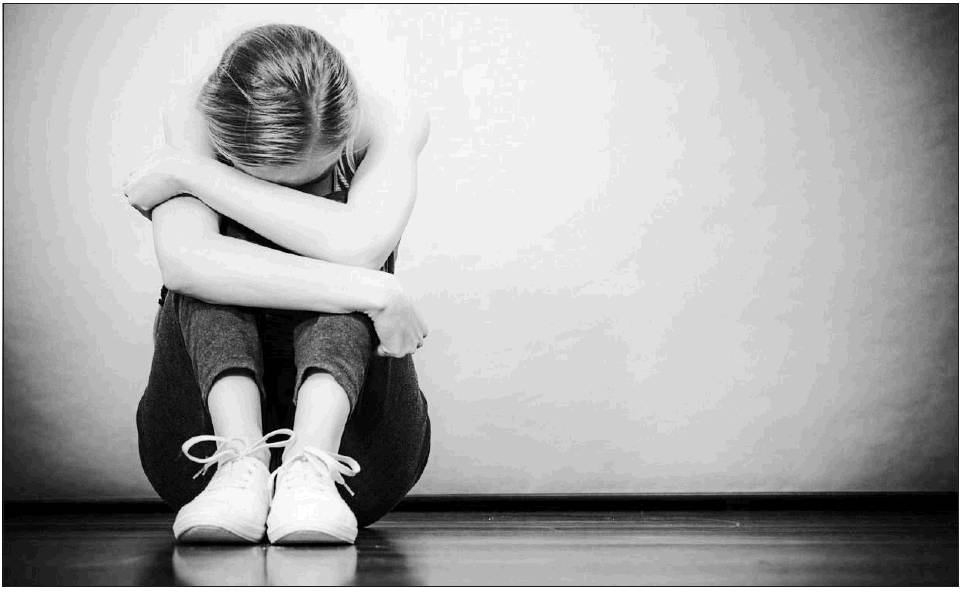At-home resources to help children cope with anxiety
Waiting lists to see a therapist can be long. There is evidence that workbooks and online therapies can help in the meantime.
By Emily M. Becker-Haimes FOR THE INQUIRER
As the clinical director of a pediatric anxiety specialty clinic, I am saddened that the pandemic has exacerbated anxiety for many kids and teens. I am worried about providers’ collective ability to do right by youth struggling around the nation. For example, our clinic has had a nearly 400% increase in referrals compared to this time last year. This aligns with concerning patterns seen more broadly in youth mental health services.
Unfortunately, the waiting list for appointments in clinics across the country is long — some families are turned away while others are faced with waiting four or five months for an appointment. The families I’ve spoken with all shared stories of relentlessly calling different treatment providers without success, desperate to get their children into therapy services.
Unfortunately, chronic underinvestment in behavioral health has left our workforce unequipped to absorb the rapidly increasing demand for services. While youth wait for professional support to feel better, there is evidence that self-help resources, such as workbooks on managing anxiety and online therapies, can help in the short term and are better than nothing.
If you are searching for services for your children or are sitting on a wait-list, here are my favorite resources for children, teenagers, and parents that align with best practices for anxiety treatment. Many of the books and workbooks referenced can be found online used at low cost.
Self-help workbooks are grounded in cognitive-behavioral techniques aimed at helping kids or teens understand and manage their symptoms, such as a racing heart rate or feelings of impending danger.
For young kids: What to Do When you Worry Too Much: A Kid’s Guide to Overcoming Anxiety by Dawn Huebner
For teens: The Anxiety Survival Guide for Teens by Jennifer Shannon
For parents: These books aim to educate parents about how anxiety can manifest in children, how to identify when the anxiety may have reached a point where treatment may be helpful, as well as offer cognitive behavioral strategies parents can use to help:
>Freeing Your Child from Anxiety: Revised & Updated Edition by Tamar Chansky
>Helping Your Anxious Child: A Step by Step Guide for Parents by Ronald Rapee
>You and Your Anxious Child by Anne Marie Albano
Online resources for parents:
>WorryWiseKids.org: I am a particular fan of their “Dos and Don’ts for Parenting an Anxious Child.”
>Child Anxiety Tales: An online training program designed to support parents in helping their children better manage stress and anxiety ($99 for a four-month subscription).
Online therapy resources for youth and parents:
>Project Y.E.S.: Free, brief, web-based activities designed to help teenagers learn strategies for dealing with stress.
>Mayo Clinic Anxiety Coach: A series of videos and guided questions for youth and their families to learn about how youth can gradually learn to face their fears.
>Project BRAVE: A free onesession program for parents to learn skills they can use to help their children manage anxiety more effectively.
In addition to trying some of these self-help resources, I encourage families to put themselves on multiple wait-lists for the first available appointment and continue looking in the meantime for another provider (but please remember to call the other providers back and cancel so the spot can be offered to another family in need). And be persistent — therapy slots often open up in the summer as school stressors wind down.
It’s important to remember that we all have anxiety for an important reason. Anxiety is designed to function as an alarm system to keep us safe from harm. Our anxiety alarms protect us by keeping us from doing things like running into the street when a car is coming. A healthy amount of worry can also motivate us to do things like study for a test for which we have not prepared. However, sometimes our alarm systems can become hypersensitive, like a smoke detector that goes off every time you bake cookies and not just when the house is on fire. When the alarm system is hypersensitive, kids may start avoiding objectively safe situations that make them anxious, which can actually increase anxiety over time. Ultimately, we want to help kids learn to identify when their anxiety alarm may be signaling a “false alarm” vs. a “true alarm.”
Once you have identified potential false alarms, we want to help kids gradually take small, supported steps to face their fears, through a process called gradual exposure or “exposure therapy.” This helps kids learn that they can handle the things they are scared of and learn to tolerate their feelings of distress. Think of bravery as a muscle that needs to be regularly exercised.
While a therapist can be very helpful in supporting the process of exposure therapy, many of the resources above can help guide parents to support their children in gradually facing their fears.
Emily Becker-Haimes is an assistant professor at the Center for Mental Health in the Perelman School of Medicine at the University of Pennsylvania. She directs the Pediatric Anxiety Treatment Center at Hall-Mercer Community Behavioral Health Center of Pennsylvania Hospital (PATCH). The opinions expressed in this article do not represent those of the University of Pennsylvania Health System or the Perelman School of Medicine.
“ Once you have identified potential false alarms, we want to help kids gradually take small, supported steps to face their fears, through a process called gradual exposure or ‘exposure therapy.’
Emily M. Becker-Haimes
